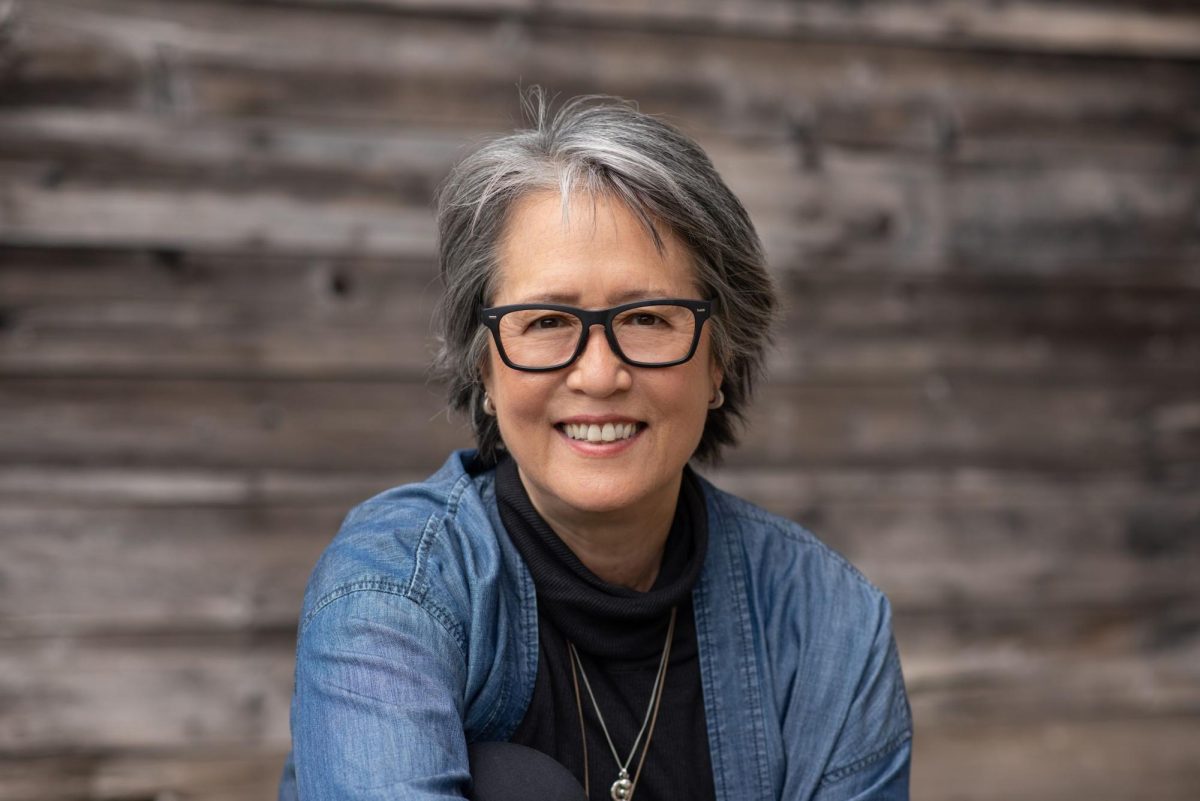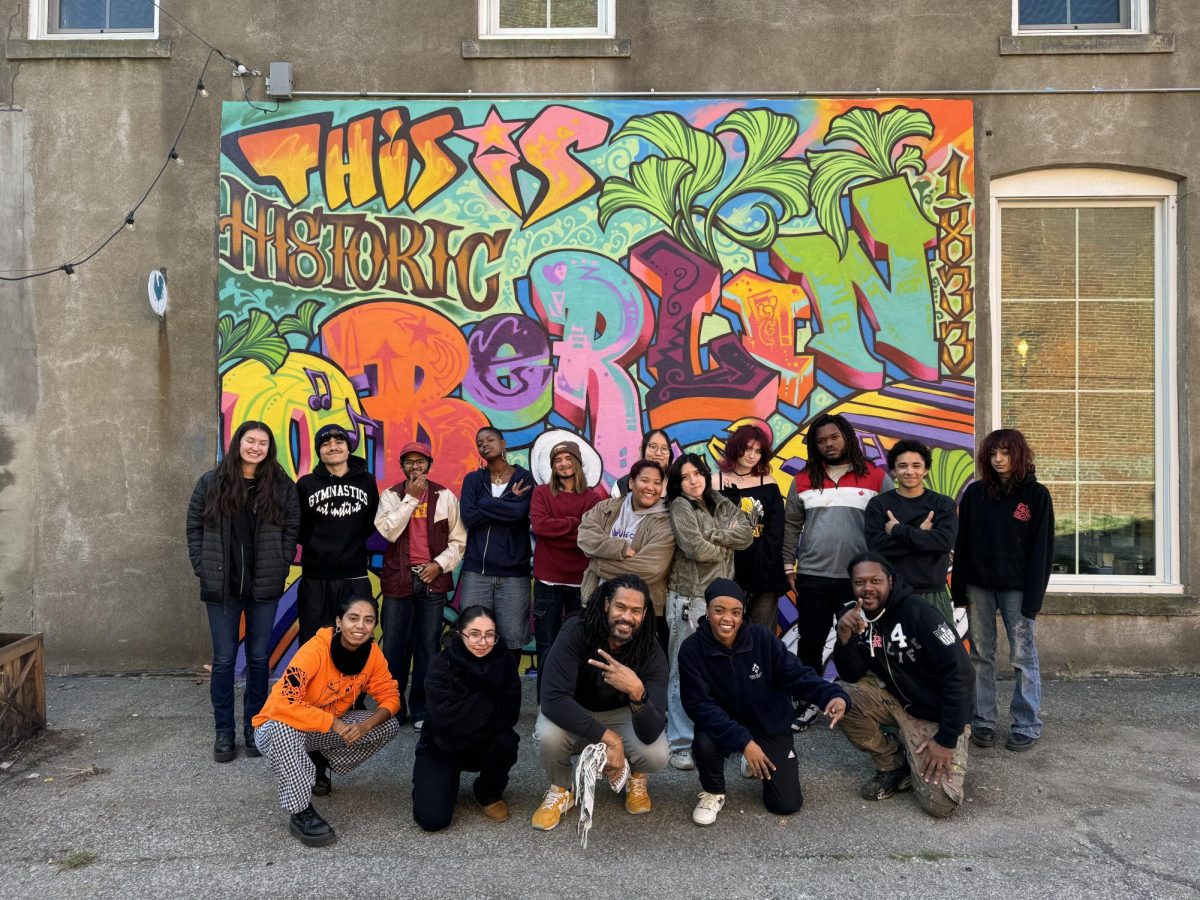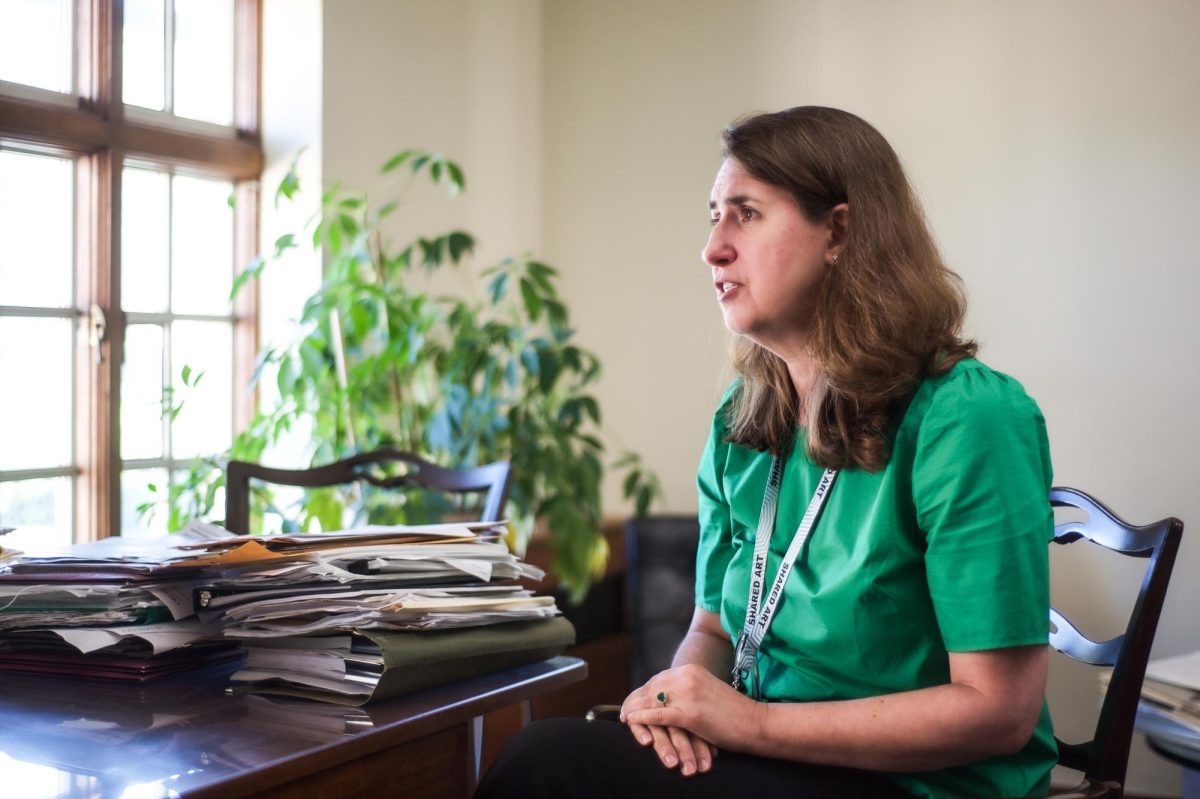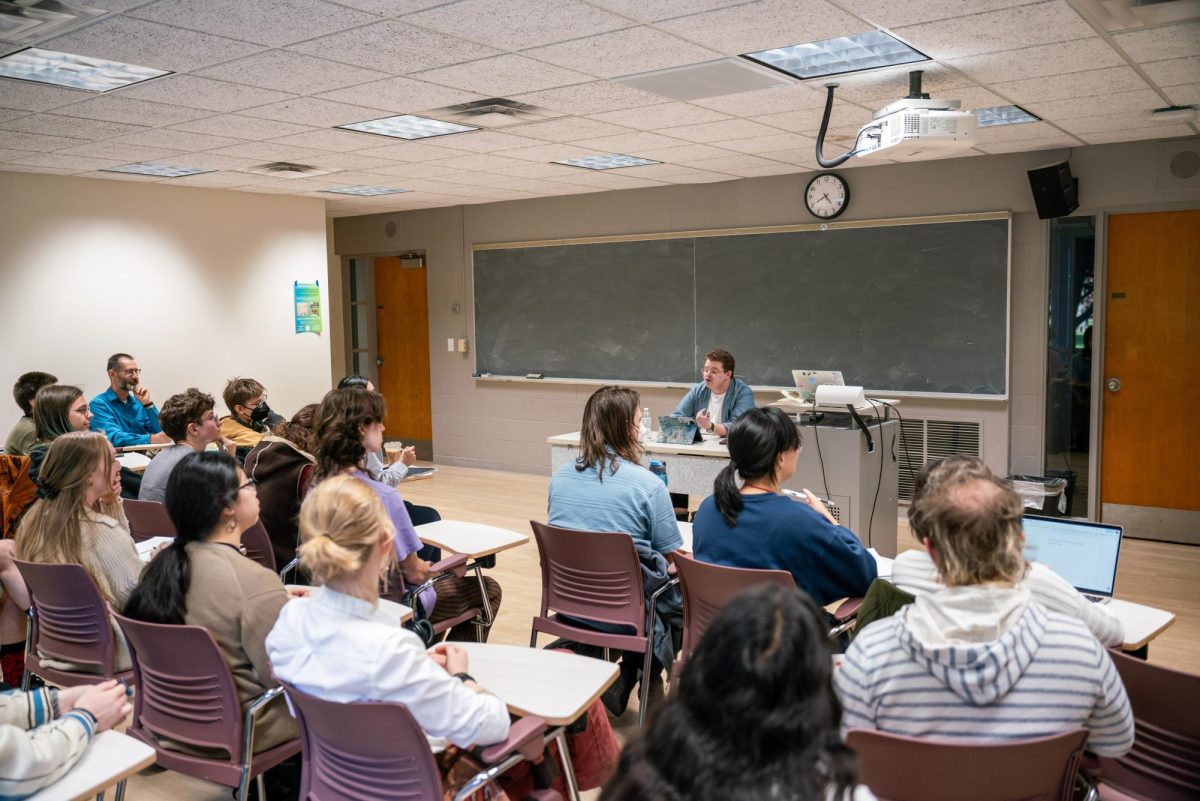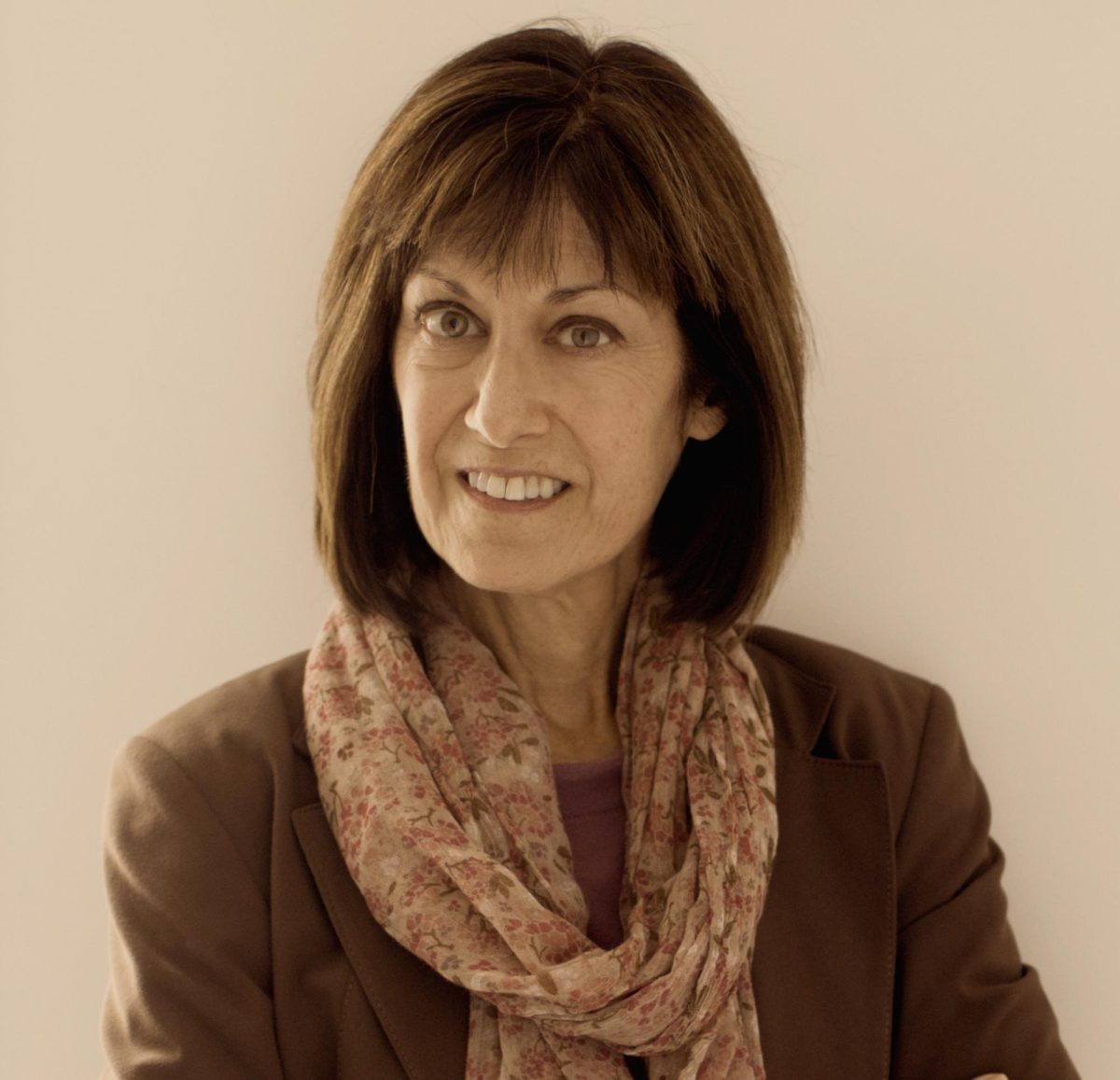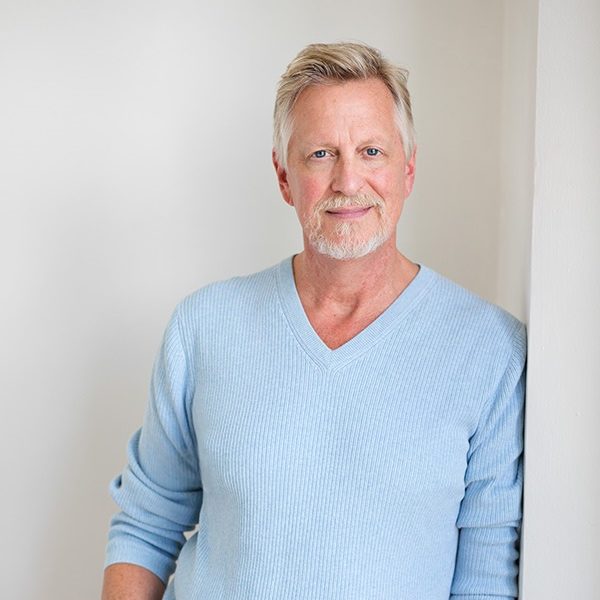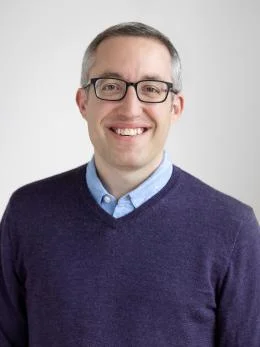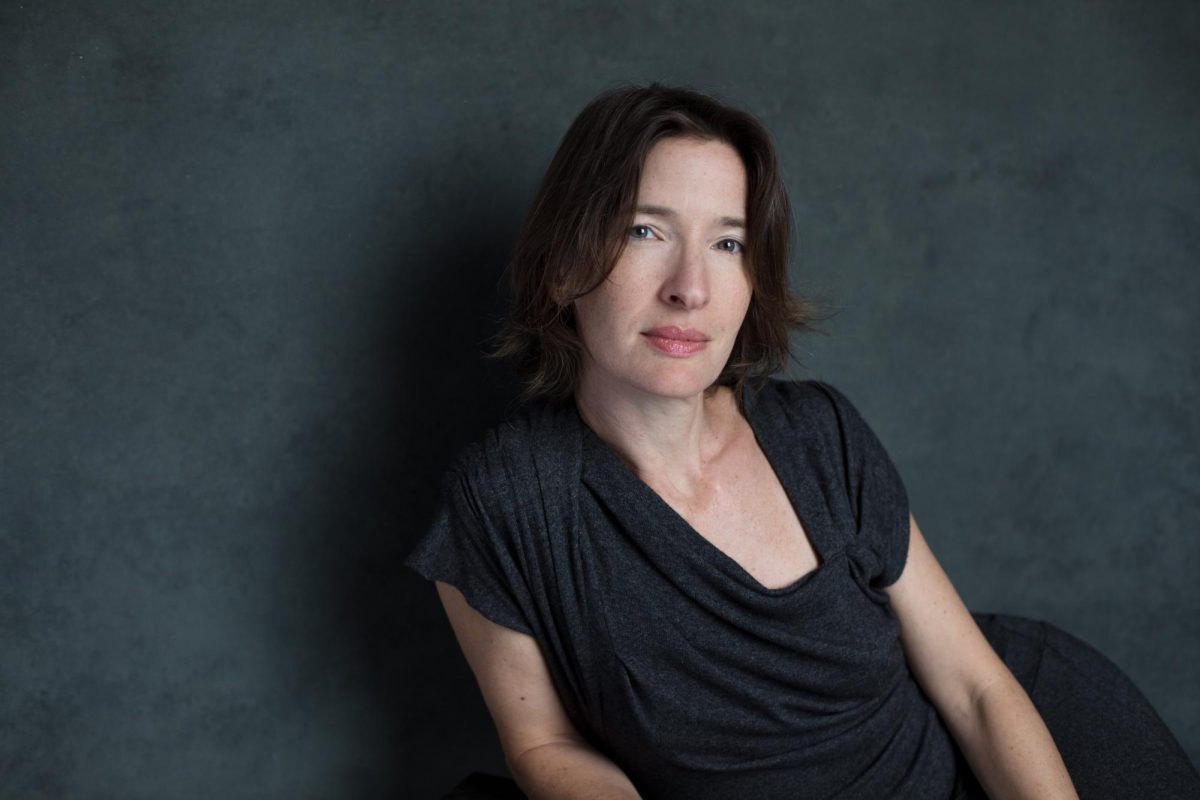Ruth Ozeki is a novelist, documentary filmmaker, teacher, and Zen Buddhist priest. She will be visiting campus Tuesday, March 19 to give a talk on Zen and the Art of Realizing Fiction in Dye Lecture Hall from 6–8 p.m.
This interview has been edited for length and clarity.
JR: How does being a Zen priest influence your writing and writing practice?
When I was your age, and younger, I wanted to be a writer. That was the only thing; that was it. I wanted to be a novelist. But I didn’t really start writing seriously — I was doing some short story writing in college and then I kind of stopped and veered off and got involved in the film business — and then I came back to writing in my late 30s, just about the same time that I started practicing Buddhism. And in Buddhism, there’s this idea that what makes you take Buddhism seriously is encounters with sickness, old age, and death. That’s what I was encountering at the end of my 30s, and I needed to somehow learn to be with that and deal with that, and it was right around that time that I also started writing My Year of Meats. The two practices kind of evolved at the same time, and I think they were really quite symbiotic.
Perhaps you’ve heard, but in Buddhism, there’s this teaching called the Four Noble Truths. The first Noble Truth is the Noble Truth of suffering — that suffering exists, and that in human existence, we will always be grappling with some kind of suffering. I think the first Noble Truth of literature is suffering as well. I mean, the whole reason literature exists is to give us a way to, again, grapple with and literally sit with the first Noble Truth of suffering.
The last thing I would say, then, is that Zen is as much a philosophical tradition as it is a religious practice. The philosophical traditions of Zen really are trying to understand the nature of reality, what is real? That, for example, ends up being a question in The Book of Form and Emptiness. So, the book is very much about exactly this, but it came from a Zen teaching. As you can see, my writing and my Zen practice are just completely interwoven.
ER: Mental health is an integral part of the stories you tell. How do you navigate the power that literature and these characters can have?
You know, to be honest, when I’m writing, I’m not really writing for people. I write in order to understand something myself, and I don’t really think about the effect it’s going to have on the reader until much later in the process. I’m very concerned about accurate representation, so when I was writing The Book of Form and Emptiness, I was consulting with therapists, with voice-hearers, people with lived experience. I always make sure that the manuscript is read by people who have some sort of experience with the constituency that I’m writing about, but that comes later. It’s really for me, for me to try to understand.
In The Book of Form and Emptiness, it’s complicated; there’s many different overlapping threads: this idea of what does it mean to hear a voice and is it real? What does it mean to write fiction? What is it to realize fiction? When does a gift turn into a pathology? What is normal and who gets to decide what normal is? All of these kinds of things have been going through my mind for as long as I can remember. I’m not a voice-hearer myself, but I have struggled with mental and psychiatric challenges from quite a young age. So, this is all stuff that is part of who I am and why I’m a writer. Like Benny, when I was a little bit older than him, I certainly had my time in a locked ward, and I think back on that: what was that all about anyway? What really happened back then? Because I was just a kid. Anyway, it’s trying to understand my own lived experience better and I think that’s why I write.
JR: On sort of a similar note, you are in some of your work! Can you tell us a little bit about that, about Ruth from A Tale for the Time Being?
I would say that I’m in all of my books; Ruth is the most overt manifestation, but I’m very much in all of the characters that I write. But on the other hand, of course you are your characters, because where else are those characters going to come from?
In any case, with A Tale for the Time Being, that book really started with Nao; it started with her voice. I knew that she was speaking in the first person. I knew that she was actually not speaking, she was writing. I figured by the sound of her voice that she was writing in a diary. I knew that she was writing to somebody, but she didn’t know who it was. She was just kind of addressing the ether. So, my job as the writer was to try to figure out who it is that she’s talking to. Long story short — I mean literally, I’m fast forwarding over about five or six years at this point — I actually managed to finish a draft with a “reader” in place. I finished this draft, and it really was terrible. But we decided to give it to my editor anyway and hope that we could figure out what to do.
Just as we were about to do that, the earthquake and tsunami in Fukushima happened. That was one of those events that, in a way, caused a rift in time. Whenever something like that happens, it’s almost like reality gets broken. It broke the planet, and it broke my novel, and I just realized I couldn’t continue. But Nao’s voice was so strong that I couldn’t let her go. Or she wouldn’t let me stop. I was talking to Oliver, my husband, about it, and he pointed out this idea that the only way to continue was to allow that brokenness to be. To not try to hide the seams. To allow the seams to show. The way to do that with a novel, with fiction, is to step into the novel as a nonfictional character, because then you’re inviting the reader, at any moment, to question. Is this real? Is this not real? It allows the brokenness to continue. It makes it apparent and visible. I thought this was a really interesting idea; I thought it was great. I told him, “Great, but if I’m in the novel, you have to be in the novel, too!” He agreed because he’s a good sport.
JR: Was the cat Pesto, from A Tale for the Time Being, real?
Well, it depends on what you mean by real, doesn’t it? I had a rule that, if I was going to use real people or real characters, real beings in the book, I would have to ask their permission. We did have a cat, and I asked the cat if I could put him in the novel. He turned his back on me, and he started licking his asshole. I took that as a no. So, I changed the cat’s name to protect his identity, but our cat certainly did inspire Pesto.
ER: Another theme in your books is environmentalism — what is your hope for literature’s impact on the environment?
I try not to have too many hopes about literature’s impact. Having said that, I do think that fiction, in particular, is tremendously powerful, which is why it’s still around. We need it. It helps us feel things differently. It’s a different kind of knowing; it operates in a different sphere of knowing. People have certainly written about this at length, but there’s the idea that fiction allows us to inhabit the subjectivity of others in a way we can’t do otherwise. The imagination is enormously powerful, as we can see. The world exists now because of our imagination; we imagined this, and then it happened. Nothing happens if you don’t imagine it first. We need to work with our imaginations in a wider and more compassionate way, and that’s our job as English majors. You have to imagine different outcomes for there to be any possibility of a different outcome. The more we exercise those kinds of imagination, the better off we’ll be.
ER: Can you tell us a little about your talk April 19?
I’m going to read from The Book of Form and Emptiness. I’m going to talk about voices and where voices come from, and ideas of reality and the imagination and how we know the difference. What I’d like to do is talk a little bit at the beginning, but then I would really like to have a good chunk of this time together in dialogue!


